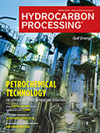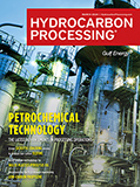Hydrogen
AWS unveils startups selected for the Clean Energy Accelerator 3.0 program
Amazon Web Services (AWS) announced the startups selected for the Clean Energy Accelerator 3.0. The program is designed to facilitate collaborations with mature startups developing breakthrough clean energy technologies.
Efficient and robust hydrogen peroxide propylene oxide (HPPO) process
Propylene oxide (PO) is an important organic building block in industry and is used to manufacture polyether polyols, unsaturated resins, nonionic surfactants and carbonates.1,2,3
Inpex to use BASF-JGC Corp.'s CO2 capture technology for large-scale blue H2/ammonia project
Inpex plans to utilize BASF and JGC Corp.'s HiPact CO2 capture technology in its Kashiwazaki Clean Hydrogen/Ammonia project.
CF Industries-Lotte sign MoU for clean ammonia offtake in South Korea
CF Industries announced that it has entered into a MoU with LOTTE CHEMICAL that will guide the companies in a joint exploration of clean ammonia production and long-term clean ammonia offtake into South Korea.
Methanex-Mitsui complete first net-zero voyage fueled by bio-methanol
Methanex Corporation and Mitsui O.S.K. Lines, Ltd. announced the dual-fuel vessel “Cajun Sun” successfully completed the first-ever net-zero voyage fueled by bio-methanol.
Cepsa to supply green ammonia to Rotterdam port
Spain's Cepsa signed a deal with three Dutch companies to supply green ammonia to a terminal in the port of Rotterdam.
ExxonMobil awards FEED for world's largest low-carbon hydrogen facility
ExxonMobil announced the next step in the development of the world’s largest low-carbon hydrogen production facility with a contract award for front-end engineering and design.
Sonatrach, Sasol to produce 'low carbon' hydrogen in Sicily
Algerian state energy company Sonatrach is teaming up with South Africa's petrochemical group Sasol on a project in Sicily to produce "low carbon" hydrogen and synthetic natural gas (syngas) as well as to capture and reuse CO2.
Mabanaft and Hapag-Lloyd sign MoU for the supply of ammonia as bunker fuel
Together, Mabanaft and Hapag-Lloyd will assess the viability of and the options for the safe handling of clean ammonia as a bunker fuel in and around the Port of Hamburg.
Topsoe signs agreement on first commercial size dynamic green ammonia plant in China
Topsoe, a global leader in carbon emission reduction technologies, has been chosen by Mintal Hydrogen to provide technology to the first dynamic green ammonia plant in China.

- China's March jet fuel exports jump 77.4% from a year earlier 4/18
- Nigeria strikes deal with Shell to supply $3.8-B methanol project 4/18
- Singapore fuel oil stockpiles rebound to 8-week high on higher imports 4/18
- Clariant launches new CATOFIN 312 propane dehydrogenation catalyst 4/18
- Solvay inaugurates new blowing agent production unit in Rosignano, Italy 4/18
- Meridian Energy Group’s Davis Refinery Project in North Dakota (U.S.) will be the world’s first net-zero carbon refinery 4/17




